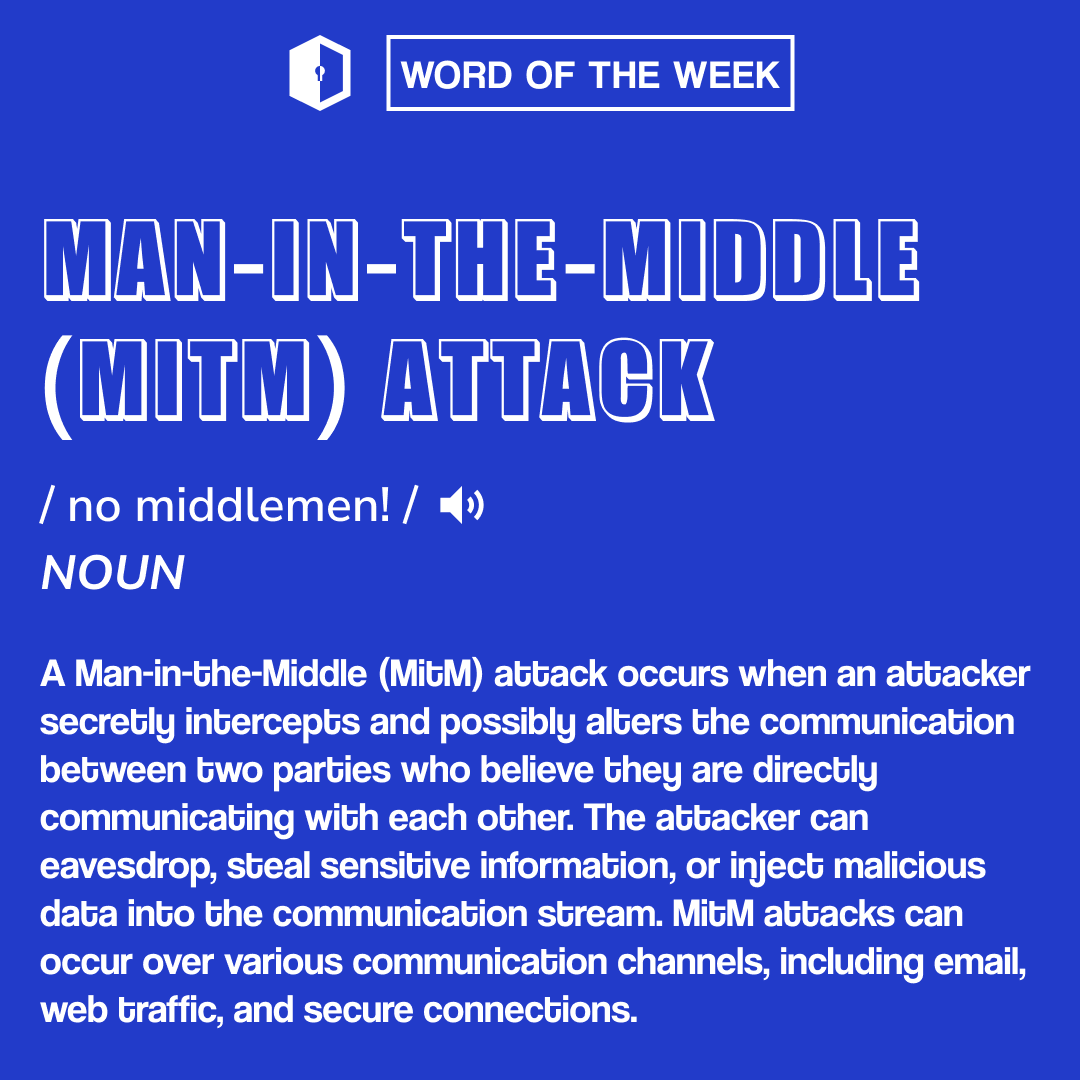👥 Cyber Security Word of the Week: Man-in-the-Middle (MitM) Attack! 👥
A Man-in-the-Middle (MitM) attack occurs when an attacker secretly intercepts and possibly alters the communication between two parties who believe they are directly communicating with each other.

A recent high-profile case involved a MitM attack on a major financial institution's online banking platform.
Cybercriminals intercepted the communication between users and the bank’s servers, capturing login credentials and personal information. This breach highlighted the importance of robust encryption and secure communication protocols to prevent such attacks.
🛡️ What is a Man-in-the-Middle (MitM) Attack?
A Man-in-the-Middle (MitM) attack occurs when an attacker secretly intercepts and possibly alters the communication between two parties who believe they are directly communicating with each other. The attacker can eavesdrop, steal sensitive information, or inject malicious data into the communication stream. MitM attacks can occur over various communication channels, including email, web traffic, and secure connections.
🚨 Why is a Man-in-the-Middle (MitM) Attack Critical?
MitM attacks are critical because they can lead to severe consequences, such as data theft, identity fraud, and unauthorized transactions. These attacks compromise the confidentiality and integrity of communications, making them highly dangerous. They can be particularly hard to detect, as the victim remains unaware that their communication has been intercepted.
🛡️ How to Stay Safe from Man-in-the-Middle (MitM) Attacks?
- Use Strong Encryption: Ensure all communications are encrypted using strong encryption standards, such as TLS.
- Avoid Public Wi-Fi: Refrain from accessing sensitive information over public Wi-Fi networks, as they are often unsecured.
- Implement Multi-Factor Authentication (MFA): Use MFA to add an extra layer of security, making it harder for attackers to gain access even if credentials are intercepted.
- Verify Websites and Certificates: Always check for HTTPS and valid certificates when entering sensitive information online.
- Use VPNs: Utilize Virtual Private Networks (VPNs) to encrypt and protect your internet traffic on unsecured networks.
"Keep your conversations private and your data secure. Employ strong encryption, avoid unsecured networks, and stay vigilant against MitM attacks. Together, we can protect our digital interactions!"
Let’s enhance our defenses and secure our communications from prying eyes.
Stay tuned for more insights and tips in our Cyber Security Word of the Week series! 🌐🔒

